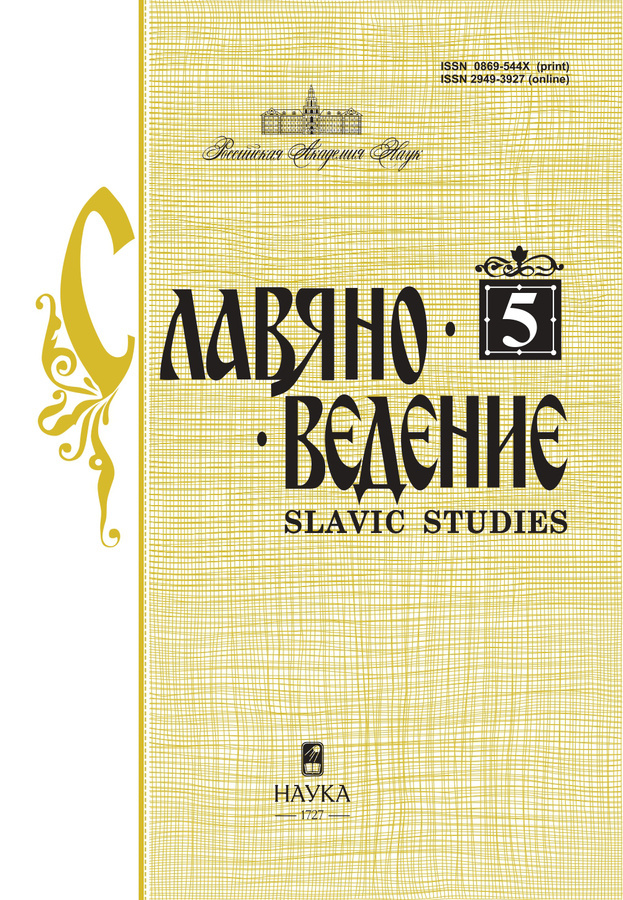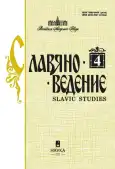The Motif of (Not)Home in Bosnian Refugee Literature
- Authors: Shatko E.V.1
-
Affiliations:
- Institute of Slavic Studies of Russian Academy of Sciences
- Issue: No 4 (2025)
- Pages: 101-108
- Section: * * *
- URL: https://modernonco.orscience.ru/0869-544X/article/view/696155
- DOI: https://doi.org/10.31857/S0869544X25040085
- EDN: https://elibrary.ru/VABWLW
- ID: 696155
Cite item
Full Text
Abstract
The article explores the motif of home in contemporary Bosnian refugee literature. The study focuses on the short story collections «Sarajevo, Exodus of a City» by Dž. Karahasan, «Sarajevo Marlboro» by M. Jergović, and the novels «Tri samoće ili mjesto nedovršenih stvari» by V. Kapor and «Catch the Rabbit» by L. Bastašić. For Karahasan and Jergović, home becomes a space of destruction, both literally and metaphorically. For Kapor, it is a space of memory, that symbolizes something lost but necessary for the wholeness of the self. In contrast, in Bastašić's novel, the lost home is not idealized at all; it is sharply contrasted with a civilized home. In besieged literature, home loses its protective function, as it is understood as a specific building or as a city under siege, thus becoming a source of danger itself. The home ceases to be a site of action or refuge; it is transposed into the realm of memory, becoming ghostly, illusory, and unattainable. Most characters in refugee literature (unsuccessfully) strive to (re)create a home or retrieve what has been lost. The trauma from losing a home often proves to be insurmountable (with the exception of the novel «Tri samoće»).
About the authors
E. V. Shatko
Institute of Slavic Studies of Russian Academy of Sciences
Author for correspondence.
Email: eshatko@gmail.com
ORCID iD: 0000-0001-9467-8987
Moscow, Russian Federation
References
- Iglton T. Ideia kul’tury. Moscow, Izdatel’skii dom Vysshei shkoly ekonomiki Publ., 2012, 192 p. (In Russ.).
- Lakoff Dzh., Dzhonson M. Metafory, kotorymi my zhivem. Moscow, Jeditorial URSS, 2004, 256 p. (In Russ.).
- Lotman Iu.M. Semiosfera. St. Petersburg, Iskusstvo – SPB, 2000, 704 p. (In Russ.).
- Maslova V.A. Kognitivnaia lingvistika. Minsk, TetraSistems, 2004. 256 p. (In Russ.).
- Shat’ko Je.V. Topos Sarajeva v «osazhdennoi» literature: Dzh. Karakhasan, M. Jergovich, K. Zaimovich. Topos goroda v sinkhronii i diakhronii: literaturnaia paradigma Tsentral’noi i Iugo-Vostochnoi Jevropy. Kollektivnaia monografiia, otv. red. N.N. Starikova. (Seriia «Literatura KHKH veka»). Moscow, Institut slavianovedeniia RAN, 2023, pp. 198–228. (In Russ.).
- Toporkov A.L. Dom. Slavianskaia mifologiia: Entsiklopedicheskii slovar’. Moscow, Ellis Lak, 1995, 416 p. (In Russ.).
- Toporova T.V. Semanticheskaia struktura drevnegermanskoi modeli mira. Moscow, Radiks, 1994, 192 p. (In Russ.).
Supplementary files








